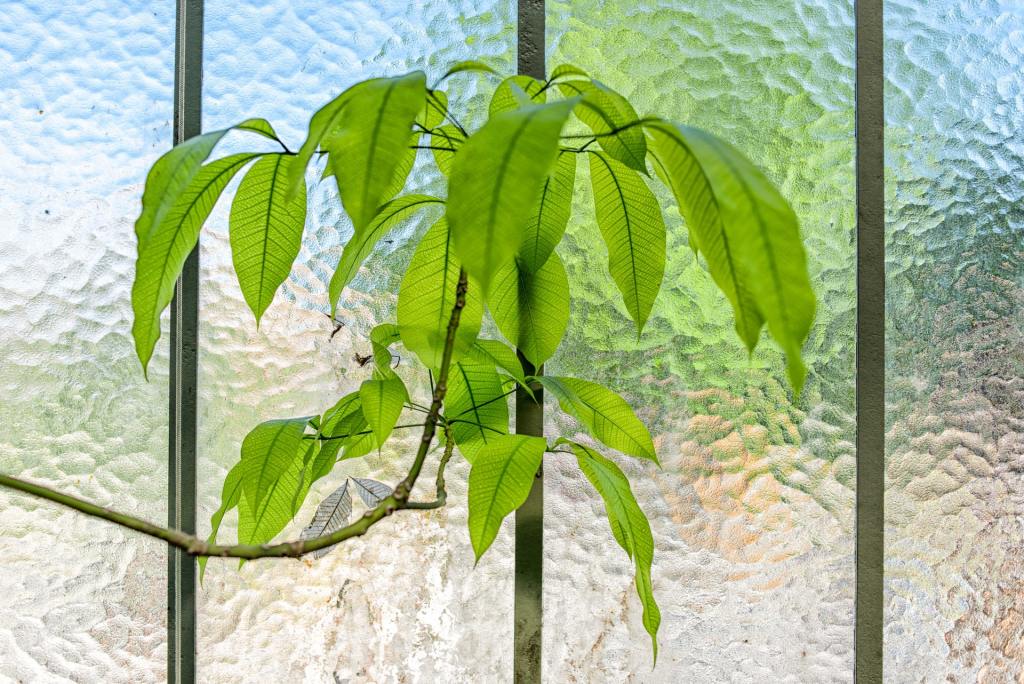It’s always exciting to get another plant, but new plants bring anxiety along with them. If that new plant is a Chinese money tree, we’ve created a guide to everything you need to know about caring for it, to ensure you’re ready. We’ll discuss the plant’s history along with some facts about the plant, and then we’ll go into care tips so you can give this plant the best life possible.

What is a money tree?
Native to Mexico and South America, the Chinese money tree is a six-leafed tree that can be grown indoors year-round. It’s ideal for anyone looking for a plant with a tropical look, that might look great next to other smaller trees such as palms or yuccas. There’s a feng shui belief that suggests the money tree will bring positive energy and good luck to its owner. Another claim is that it may reduce stress, anxiety, and even sleep disorders. You’ll have to find out for yourself if any of this rings true for you, but one thing is for sure—this plant will bring beauty to your home.

Care tips for the Chinese money tree
The worst thing that can happen to a plant parent is bringing a plant home only to misjudge what it needs and end up killing it within the first week. These tips about water, light, food, humidity, temperature, and toxicity will help you care for your new Chinese money tree in just the right way.
Water
As with most plants, the money tree doesn’t like to sit in water. It also likes infrequent watering, but when you do water, be sure it’s a deep watering. Give the plant enough water until it begins to run out the drainage hole. Then, when it stops dripping, put it back in its saucer. If you ever notice standing water in the saucer, dump it out immediately.
Light
The money tree will thrive with bright indirect light, but it can also tolerate medium light. It’s crucial that you also rotate the money tree every time you water. This allows the plant to get even lighting. If you don’t rotate the plant, you might end up with a money tree that looks a bit crooked.
Food
Like most plants, feeding should happen about once a month during the heavy growing seasons, spring and summer. No fertilizer is needed during the winter months when growth is naturally slowed way down.
Humidity
The tree isn’t too picky about its humidity level, but you might want to consider a humidifier for those dry winter months.
Temperature
Since this is recommended to be a house plant, the money tree is good with the average range of house temperatures. Just be sure to stay between 60 and 80 degrees, and your money tree will be a happy little plant.
Toxicity
According to the ASPCA, the Chinese money tree isn’t toxic to pets. It’s also not harmful to humans, so if you have a curious little hand running around, they’ll be fine if they take a bite of this plant.
Other tips
The Chinese money tree does have one unique trait: It doesn’t like to be moved around a lot. So while a ZZ plant might be perfectly fine with having a new home every few weeks, the money tree will be much happier if you leave it in the same spot.
Due to this preference, don’t be alarmed if you lose a few leaves within those first few weeks when you bring your tree home. This is just the tree adjusting to its new home. Just remember that if you move the tree later on, it might lose more leaves due to acclimation.
This beautiful tree will make a fantastic addition to any plant lover’s collection. It has the unique look of both a tree and a palm, and its bright green leaves are sure to bring lovely energy to your home. Be sure to water infrequently and not let it sit in standing water to avoid root rot, and don’t forget to rotate it for an evenly grown tree.
Editors' Recommendations
- 6 tips you should keep in mind when building your own drought-tolerant garden
- Climate zone 3 plants that will thrive in cool temperatures
- Gardening 101: 7 easy seeds to grow in cups for a tiny, adorable, and low-maintenance indoor garden
- 7 easy patio plants that will thrive into the cold winter months
- These are the 10 best gardening shows to stream right now



